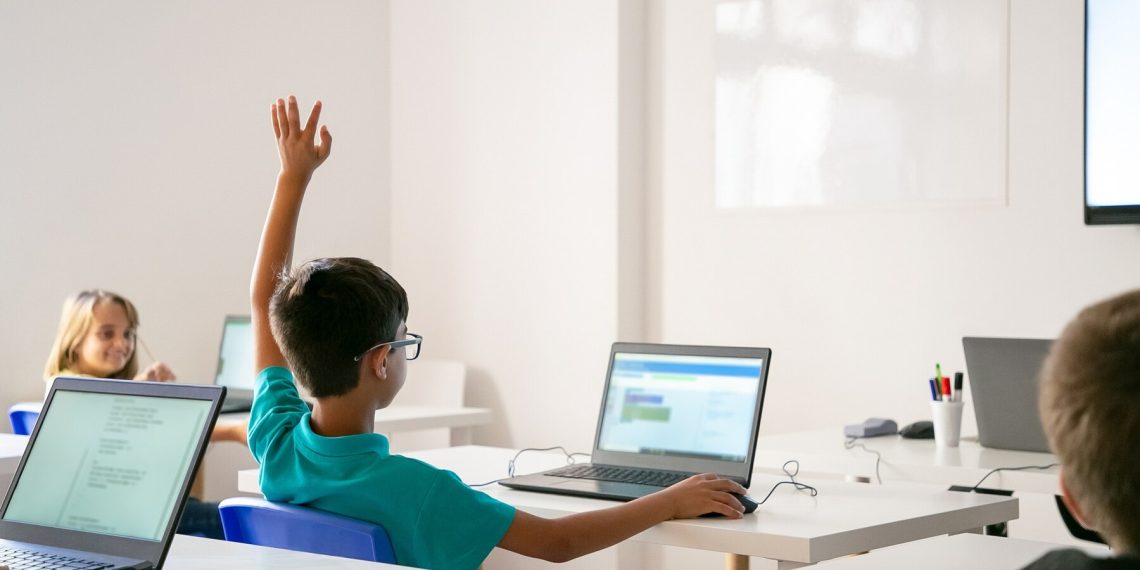The design of learning environments can significantly affect how students engage with their education. Educational spaces that are adaptable, dynamic, and student-centered can foster greater collaboration, creativity, and critical thinking. In this blog post, we’ll explore the myriad benefits of flexible learning spaces, their impact on student outcomes, and the advantages they offer educators and administrators.
The Concept of Flexible Learning Spaces
Flexible learning spaces are designed to accommodate a variety of learning activities and teaching methods. They often include movable furniture, adjustable seating arrangements, and technology integration to create an environment that adapts to the needs of both students and teachers. Schools can also repurpose campus labs to enhance educational experiences. Traditional labs often have fixed layouts that limit interaction and collaboration. By rethinking these spaces, schools can create environments that encourage experimentation and teamwork.
Historically, classrooms were rigid spaces with rows of desks facing a single teacher. This setup prioritized one-way communication and passive learning. Over time, educational philosophies have evolved, recognizing the value of active, participatory learning environments. Flexible learning spaces represent the latest shift towards creating environments that support diverse learning styles and activities.
Benefits for Students
Improved Collaboration and Communication Skills
One of the primary benefits of flexible learning spaces is that they enhance collaboration among students. Movable furniture and open spaces encourage group work and discussion, fostering better communication skills. Students learn to express their ideas, listen to others, and work together to solve problems.
Enhanced Creativity and Critical Thinking
Flexible learning environments stimulate creativity and critical thinking by providing varied and dynamic settings. When students are exposed to different ways of interacting with their environment, they are more likely to think outside the box and develop innovative solutions. These spaces often include areas for brainstorming, quiet reflection, and hands-on projects, catering to various aspects of the creative process.
Personalized Learning Experiences
Every student learns differently, and flexible learning spaces allow for personalized learning experiences. Teachers can tailor the environment to meet the individual needs of students, whether through small group instruction, one-on-one support, or independent study. This approach helps students feel more engaged and invested in their learning, leading to better academic outcomes.
Benefits for Educators and Administrators
Increased Teacher Satisfaction and Retention
Flexible learning spaces can lead to higher teacher satisfaction and retention. When teachers have the autonomy to design their classrooms in ways that best support their teaching styles and student needs, they are more likely to feel fulfilled and motivated. This sense of ownership and creativity can reduce burnout and increase job satisfaction.
Easier Classroom Management and Adaptability
In flexible learning environments, classroom management becomes more straightforward. The adaptable nature of these spaces allows teachers to reconfigure the room quickly and efficiently based on the activity or lesson plan. This adaptability leads to smoother transitions between activities and minimizes disruptions, making classroom management more manageable.
Positive Impact on School Culture and Community
Implementing flexible learning spaces can positively impact the overall school culture and community. These environments promote a sense of belonging and inclusivity, as students and teachers work together to create a supportive and collaborative atmosphere. This positive culture can extend beyond the classroom, fostering a stronger sense of community within the school.
Challenges and Solutions
Addressing Common Concerns
While the benefits of flexible learning spaces are clear, some educators and administrators may have concerns about implementing these changes. Common challenges include budget constraints, resistance to change, and the need for professional development.
Practical Strategies for Overcoming Challenges
To overcome these challenges, schools can start by pilot-testing flexible learning spaces in a few classrooms before scaling up. Seeking grants and partnerships can help alleviate budget concerns. Additionally, providing professional development and training for teachers can ease the transition and ensure they feel confident using these new spaces effectively.
Implementing Flexible Learning Spaces
Step-by-Step Guide
- Assess Needs and Goals: Begin by evaluating the needs of your students and teachers. Identify the goals you hope to achieve with flexible learning spaces.
- Plan and Design: Collaborate with educators, students, and designers to create a plan that meets your goals. Consider factors such as furniture, technology, and room layout.
- Pilot and Evaluate: Start with a pilot program in a few classrooms. Gather feedback from teachers and students to assess the effectiveness of the space.
- Scale Up: Based on the pilot’s success, expand the implementation to more classrooms and grade levels. Continue to gather feedback and make adjustments as needed.
Future of Learning Environments
Emerging Trends and Technologies
The future of learning environments will be shaped by emerging trends and technologies. Virtual and augmented reality, for instance, offers new ways to engage students and enhance their learning experiences. Additionally, AI-driven tools can provide personalized support and feedback, further enriching the flexible learning environment.
Post-Pandemic Era
The COVID-19 pandemic has accelerated the adoption of flexible learning spaces. With the increasing need for hybrid and remote learning, adaptable environments have become essential. The pandemic has highlighted the importance of creating spaces that can quickly adjust to changing circumstances, ensuring that learning continues uninterrupted.
Flexible learning spaces are transforming education by providing environments that support collaboration, creativity, and personalized learning. These spaces benefit not only students but also educators and administrators, leading to improved satisfaction, easier classroom management, and a positive school culture.
By addressing challenges and implementing flexible learning spaces thoughtfully, schools can create dynamic and engaging environments that prepare students for success in the 21st century. Consider exploring flexible learning spaces in your institution to experience these benefits firsthand.







